Guide to Minimizing Inventory Overstocks and Understocks
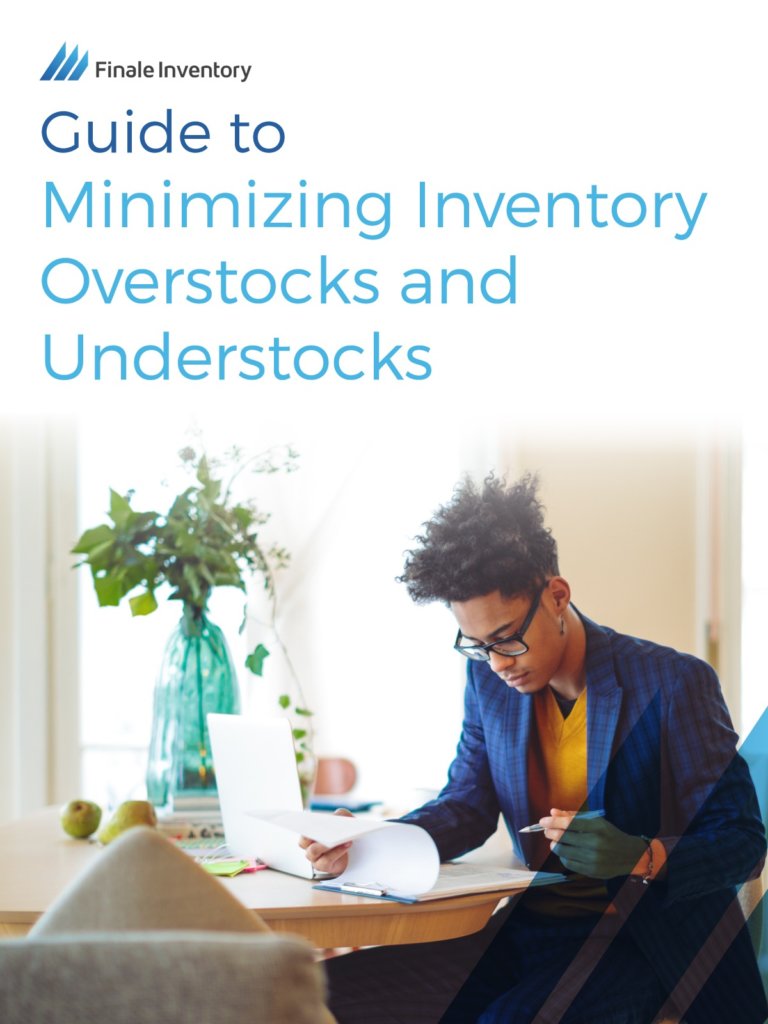
Knowing how much of a product you need to have stocked might seem like a skill that only the most successful companies know intuitively, but it’s a skill you can learn. As you figure out how to prevent inventory understocks and overstocks, you should follow a few guidelines and employ technology to fine-tune your inventory management process.
- What Do Understanding and Overstocking Mean?
- Causes of Overstocking and Understocking
- Danger of Understocking
- Danger of Overstocking
- How to Minimize Inventory Understocks and Overstocks
- How Software Can Decrease Inventory Understocks and Overstocks
- Ready to Try Inventory Management Software?

What Do Understocking and Overstocking Mean?
What are the definitions of overstocking and understocking? In the inventory management world, overstocking goes by a few different names, such as excess stock, excess inventory and stock surplus. Regardless of the terminology you employ, overstocking refers to a company over-ordering inventory and having too much stock. In contrast, understocking is when a company does not have enough inventory to keep up with the demand.
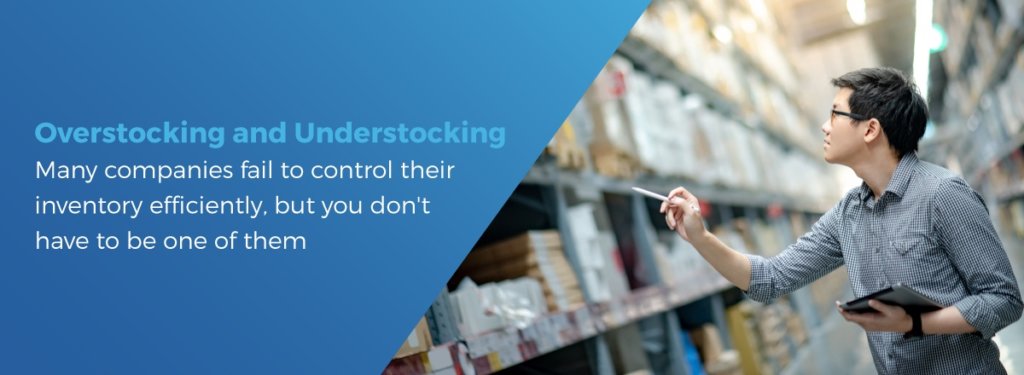
Causes of Overstocking and Understocking
When a company experiences inventory problems, they could be making several different mistakes. In addition to making common mistakes, a company’s inability to implement procedures or technology can play a huge role in over- or understocking.
Many companies fail to control their inventory efficiently, but you don’t have to be one of them. To correct any supply issues for your company, you should first know what causes overstocking and understocking in the first place:
1. Inaccurate Data
One of the primary reasons for under- or overstocking is a lack of solid data. Stolen goods, returns, shipment variances, and misplaced items all affect the needs of your inventory. Without accurate data, a company can believe that they have more or fewer items in stock than they actually have. Without all the facts, a company may incorrectly order too much or too little of a product than they actually need.
You also want to be able to predict when there will be greater demand for the items and products that you offer. Accurate data can help you discover trends with your sales. With that information, a company will know how much inventory they should order to meet the demands of their customers.
2. Mismanagement of Technology, Staff, and Processes
Even with great data helping keep your shelves stocked, you’ll need staff who can properly sell the products. If your employees don’t keep your shelves stocked, the company may lose out on sales despite there being plenty of inventory in the backroom. This is probably one of the most frustrating forms of understocking that a business can experience, as the company actually does have the products to sell customers, but employees aren’t keeping up with it.
Even if you have competent staff, standardized processes are a must for companies to get consistent results from their workforce. A process makes sure everyone knows what they are supposed to do, preventing issues where staff members are unaware of what their responsibilities are or when they need to be checking shelves.
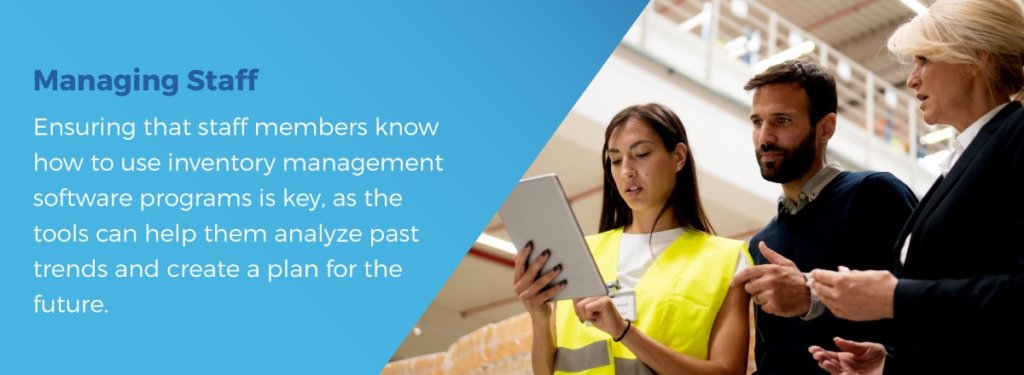
On top of staff not replacing products onto the shelves, they should also know how to interpret data and use technology. If key employees like managers are unaware of the significance of the data, they can’t use it to improve the company’s inventory.
Ensuring that staff members know how to use inventory management software programs is key, as the tools can help them analyze past trends and create a plan for the future. As a company, you’ll want to look for inventory management software that is easy to use, can integrate seamlessly into other programs and devices and will provide detailed cost analyses. Finale Inventory’s software has all of these features, making it a must-have for businesses trying to take control of their inventory.
3. Lack of Funds
Sometimes, understocking results from a business not having enough money to keep their inventory fully stocked. If your company runs into this issue, you’ll need to find a way to free up some funding so that you can invest in the future. If you have a popular item that customers routinely want, you don’t want to have a shortage. Finding ways to free up capital is crucial, as your ability to generate profit will be hindered by the amount of money you have to buy inventory.
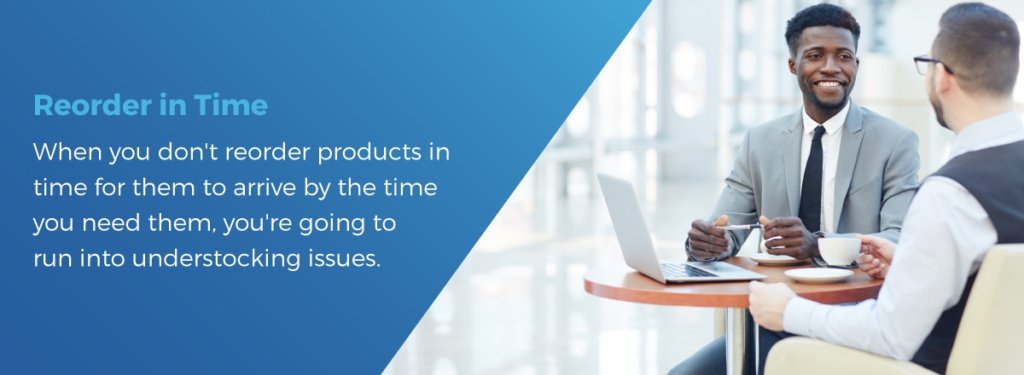
4. Not Giving Time for Reorders to Arrive in Time
When you don’t reorder products in time for them to arrive by the time you need them, you’re going to run into understocking issues. Much of a company’s issues with staying adequately stocked is by having a reactive attitude to stocking their inventory. Instead of planning ahead and predicting when they will need to have a new shipment arrive, a company will simply be playing a game of catch-up with the market.
A proactive attitude to reorders will have a company looking at the length of time it takes inventory to be shipped and how long it takes to go through the buying process with the wholesaler. If the company is placing a large purchase order from a manufacturer or distributor based in China, the lead time for the product to be shipped to your warehouse may be several months. When a company doesn’t do this, they will likely go through days or months where they are understocked while the inventory is being shipped to their stores. To combat this, companies have found success using Finale Inventory’s software, which provides order management services to help you get the best deal and make sure you are ordering products in a timely manner to take into account for supplier lead times.
5. Bad Supplier Communication
If you don’t regularly communicate with your supplier or have a good relationship with them, your company opens itself up to risks. Poor communication between suppliers and buyers can lead to missed or delayed orders, potentially costing your company sales.
One main feature of bad communication is not having anything written down between a company and a supplier. When you operate by word of mouth, it’s difficult to hold suppliers accountable for missed orders. Without deadlines in writing, it’s more likely that they will not be met.
A bad relationship with a supplier can also cause them not to make your needs a priority. If you run into a situation where inventory is selling faster than expected, you may need to rush an order. A supplier who doesn’t feel particularly obligated to you may not put in the extra effort to rush a shipment so you can keep up with extra demand.
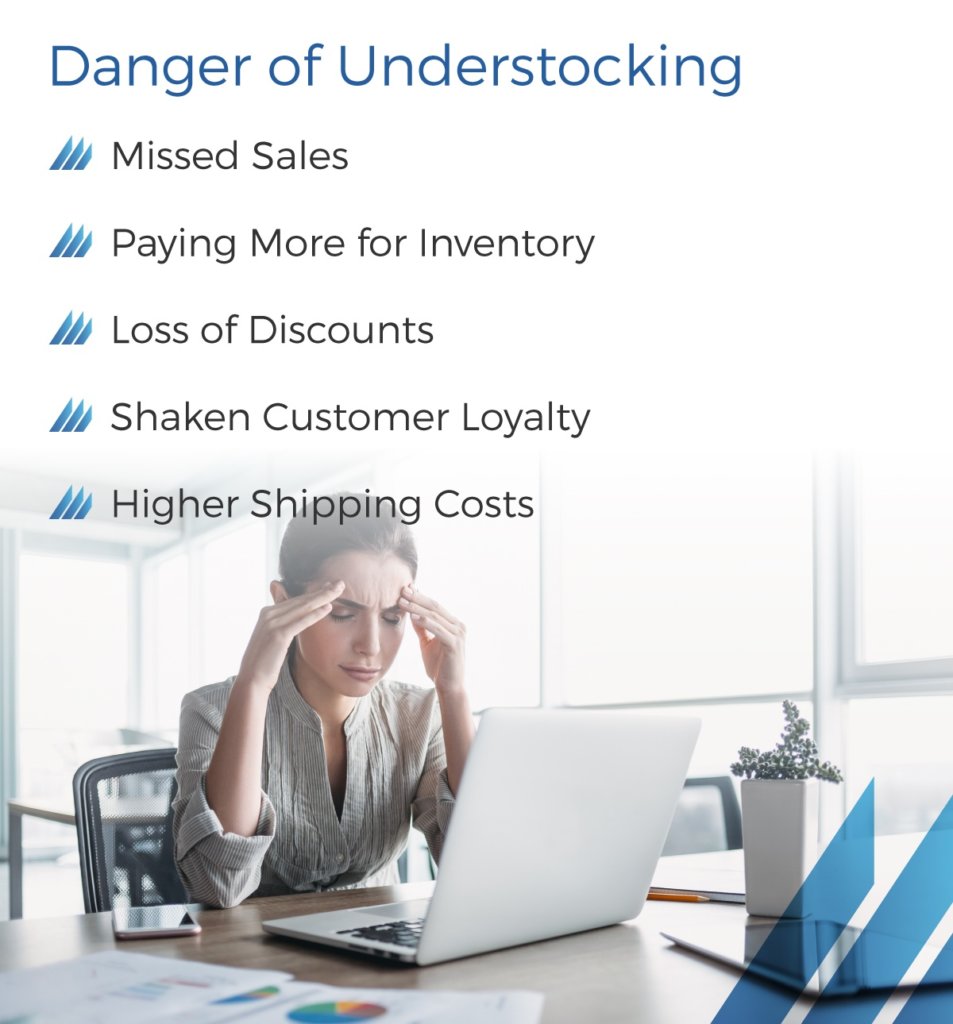
Danger of Understocking
When you understock, you open yourself to several negative effects. From missing sales to losing out on discounts and shaking the loyalty of your customers, understocking can harm your company. Before you take steps to minimize understocks, you first need to know the negative effects understocking creates.
Problems and Consequences with Understocking
The following are some of the biggest problems that understocking creates:
- Missed sales: One of the worst effects of understocking is having to turn away customers because you no longer have an item available. Without proper stocking, you can’t provide potential customers with the items they wish to purchase. As a result, a customer will be forced to go elsewhere, and you may lose their business completely.
- Paying more for inventory: When you buy early, typically you’ll receive more favorable prices for your inventory. As more companies get in on whatever items you’re selling, the price is going to go up.
- Loss of discounts: Buying in bulk will often net you the best price. When you buy bulk finished products, raw materials, and parts, you typically get a much better price. When you have to reorder a smaller batch of items to make up for your understocking, the items will most likely end up costing more.
- Shaken customer loyalty: When you don’t have enough inventory for customers, you will have to turn them away. By not having enough inventory, the customer will lose confidence in your company’s ability to meet their needs.
- Higher shipping costs: If you’re constantly placing orders to keep up with your inventory, you’ll have to pay more in shipping and processing costs. You can avoid the shipping and processing costs by not understocking, and buying an appropriate amount for your customers in the first place.
Danger of Overstocking
Having too much inventory stocked up can come with a variety of cost issues that may lead to a company’s bottom line suffering. As you craft an inventory strategy, you’ll need to know how to minimize inventory overstocks. To do so, you’ll first need to be aware of the regular issues that companies face when they overstock products so that you can avoid them.
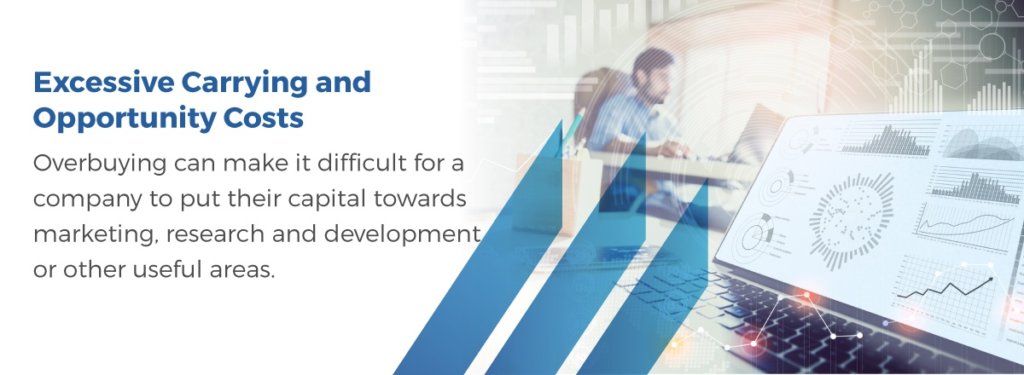
Problems and Consequences with Overstocking
Below are some of the downfalls of overstocking:
1. Excessive Carrying and Opportunity Costs
When a company purchases too much inventory, it may tie up its funds in the costs of purchasing the excess inventory. Overbuying can make it difficult for a company to put its capital towards marketing, research, and development or other useful areas. High inventory levels will simply sit in a storeroom, not generating value for a company like a quality marketing effort or a new product would.
The opportunity costs that come from holding so much inventory in a warehouse will come down to how space could be used differently if only the needed amount of inventory was ordered. Overstocking items can make it impossible for other materials to be stored, which can damage your company’s ability to expand and diversify its offerings.
2. Storage Costs
When a company holds excess inventory, it may incur extra storage costs. The cost of utilities, maintenance, and warehouse space can go up significantly if a company routinely overstocks. These unneeded costs can go up significantly if a product requires special maintenance or treatment, like needing to be stored at a particular temperature.
3. Reduction in Demand for a Product and the Product’s Value
Some items that are stored for too long may not have lasting value. In addition to losing demand, extended storage can damage products, especially if they are being shipped from facility to facility as a company looks for a market to offload them.
Along with the problem of damage to some products, if you don’t sell a product fast enough, it can become obsolete in the market before you have a chance to move all of it into consumer’s hands. If that happens, you’ll be stuck with a warehouse full of products that the market no longer values, forcing you to eat your costs and dispose of the products or sell them for a much lower cost. Electronics and mobile phones are notorious for having the value of the product greatly erode when the new models are made to launch and made available.
For products such as food or healthcare products, products past their expiration date may need to have the assets written down as the products can no longer be sold.
How to Minimize Inventory Understocks and Overstocks
As you look at ways to prevent inventory understocking and overstocking, there are many steps you can take as a company to make your inventory management system more efficient.
Below are some practices that the best companies use to ensure that they keep their inventory at optimal levels:
1. Reduce Inventory That Is No Longer Relevant to the Market
Obsolete inventory is one of the most frustrating problems for a company to deal with. When a company overstocks products that will soon become irrelevant in the market, they run the risk of never recouping the money they spent on the products in the first place.
To prevent this sort of problem from occurring, a company should run the data and predict when an item is going to become obsolete in the market place. Knowing when a product is likely going to be overtaken by a new version or a competitor’s superior product is crucial as you plan out how many products you need in your inventory.
The life cycles of the products that your company offers should be monitored monthly to see how the demand changes. As you get an idea of the demand patterns for your products, you’ll be better equipped when you order products. The future sales potential of the products will help you decide how much more merchandise you need to store, and it will prevent you from overstocking an item.
If you do happen to overstock an item, you can reduce the price to offload it. While this may hurt in the short term as you aren’t making as much money as you thought you would on the item, it will have a positive longterm effect. Without the products clogging up your warehouse, you’ll reduce the carrying costs and free up space to store more profitable products.
2. Faster Supplier Lead Times
When a company experiences greater demand for a product that they offer, they want a supplier that can get them the product as fast as possible.
As you select a supplier, consider how much time will pass between you sending an order to them and them shipping that order. You’ll want to find a supplier that can quickly process your order and get the products to you as fast as possible. With fast supplier lead times, you avoid the risk of understocking, as you can stay on top of the demands of your customers.
3. Centralize Data
When you are trying to minimize understocks, one of the best solutions is finding a way to put your data all in one place. It’s inefficient to look at multiple programs to compare different data points. Instead, use an inventory management system that can pull data from multiple areas of your business, including eCommerce, marketing, shipping, POS and whatever else plays into the sale of your products.
Having a system that stores your data in one place is even more important for businesses that have multiple store locations and warehouses. Staff members need to be able to access data quickly and be on the same page if the business is going to operate in an efficient manner. A system that keeps track of all your inventory and past sales is crucial for any company trying to centralize their data.
4. Build a Strong Relationship With Suppliers
Relationships are important in almost every industry. They are even more important with suppliers that are responsible for manufacturing and providing the product you hope to sell.
When you put effort into your relationship with your supplier, they will be more likely to place your business as a priority in their dealings. Knowing that you are going to be a consistent customer who honors their commitments can be more of a help than you might think. A strong relationship with a supplier can help ensure that your orders are always on time, and it will make it easier to negotiate better deals in the future.
5. Automate Much of the Restocking Process
To prevent human error, it’s best practice to automate much of the processes associated with managing your inventory. When you automate the process with an inventory management software, several tools are available to you. For example, you can set alerts that give you the most up-to-date information on a product’s status, such as when a product is about to sell out or if it has been taking too long to sell. Some inventory management software has advanced capability to predict when you need to reorder based on the current stock on hand and the sales velocity of the product.
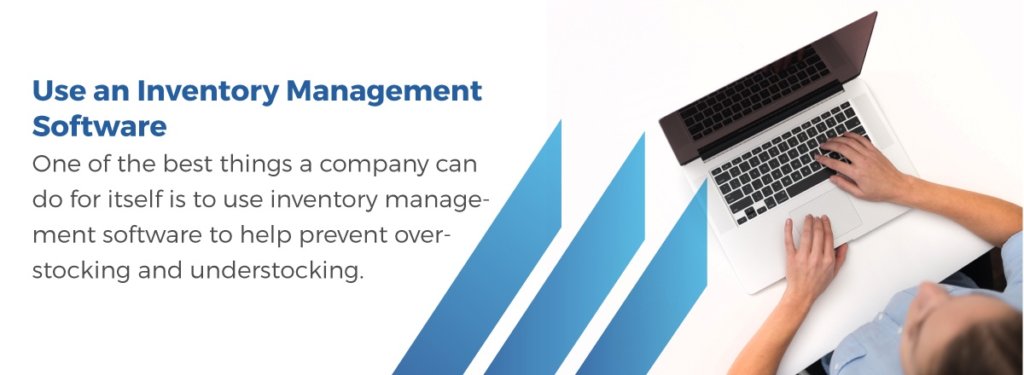
6. Use an Inventory Management Software
One of the best things a company can do for itself is to use inventory management software to help prevent overstocking and understocking. Don’t try to do it all on your own. Instead, use the latest technology to keep your inventory stocked at the appropriate level.
How Software Can Decrease Inventory Understocks and Overstocks
The best way that a company can reduce its inventory issues is through inventory management software. This kind of software is invaluable as companies grow and can no longer keep track of everything on paper.
Below are some of the most helpful features of high-quality inventory management software:
- Inventory control: Any inventory management software needs to have a built-in inventory control features. This feature will allow companies to track inventory, helping you to process orders and avoid shortages. As you select software, make sure the inventory control feature keeps a record of your past sales and provides you with up-to-date information about what you have in your inventory currently. You can anticipate when you need to order new products and take any guesswork out of it by setting reorder points to alert you when you need to reorder.
- Cloud inventory management: When you have multiple employees who all need to keep track of your inventory, you need your system integrated into the cloud. With a cloud-based software platform like the one Finale Inventory offers, employees can quickly access crucial information at any time of the day, no matter where they are. Along with the convenience, whatever inventory management software you choose should be secure and be scalable to handle future growth.
- Multi-warehouse features: If your business has multiple stores and warehouse locations, you’ll need a system that can keep a meticulous record of each location’s level of inventory and needs. The software should be able to assist in the coordination of inventory shipments between facilities, allowing for a streamlined shipping process and a staff that is on the same page. You want to make sure that your entire staff coordinate with each other, so multi-warehouse features are a must in any software that you choose.
- Software integration: For your company’s convenience, the software you choose should seamlessly integrate into other programs you already use to sell your products and services. Software that complements your current systems will help staff become more comfortable using it early on.

Ready to Try Inventory Management Software?
If you’re interested in giving inventory management software a try, start with a personalized demo. You can see if the software is right for you and begin to reap the benefits of using our powerful software.
Along with trying the software, you can speak with one of our helpful representatives who can answer any questions you have and highlight how Finale can meet your business’s unique needs. We make custom plans to meet the demands of companies of any size.





